When you first start breastfeeding, is there anything more discouraging than dealing with a painful, cracked nipple?
Unfortunately, cracked nipples are very common in the first weeks of breastfeeding. Around 30 percent of nursing moms experience them in the first month postpartum. Thankfully, there are many ways to heal them.
You can’t go wrong with applying a topical treatment, such as lanolin, or another type of moisturizing balm that will speed up the healing and help you enjoy your nursing sessions again.
When you need to leave the house, you can rely on soothing gel pads and breast shells to keep the friction to a minimum, so that you aren’t painfully reminded of your sore nipples every time you move.
If your painful nipples are giving you a particularly hard time, just remember that in most cases, the problem resolves itself. In the meantime, you can try one of the 14 ways below to soothe your nipples and make the healing a little quicker.
How to treat sore and cracked nipples

Whatever the cause may be, experiencing pain as a result of a sore and cracked nipple is something no mother wants to experience for prolonged periods of time.
Without the proper treatment, the nipple pain can become worse, causing you to dread every nursing session and it may even lead you to stop breastfeeding altogether. Since breastfeeding for the first 6 months of a baby’s life is highly recommended, you probably want to avoid this outcome. Here are some cracked nipple treatment suggestions to try at home:
1. Apply lanolin
- #1 recommended brand: Lansinoh Lanolin is the #1 recommended nipple cream by moms and doctors in the US. Clinically tested. Lansinoh Lanolin soothes and protects sore nipples for breastfeeding moms.
- Safe for mom & baby: No need to remove before breastfeeding. Specially designed for nursing, 100% natural and hypoallergenic. Free from preservatives, parabens, fragrance or taste.
- Relief for sore nipples: Thick, rich cream soothes and protects sore nipples. Clinically proven and ultra-pure. Our single ingredient lanolin has a unique purification process to remove impurities with no added additives.
- Essential for breastfeeding: Use to soothe and protect delicate skin. Wash hands thoroughly. Soften a pea-sized amount between fingers and apply to the entire nipple area after each feeding or as needed. Apply before showering to protect sensitive nipples.
Prices pulled from the Amazon Product Advertising API on:
Product prices and availability are accurate as of the date/time indicated and are subject to change. Any price and availability information displayed on [relevant Amazon Site(s), as applicable] at the time of purchase will apply to the purchase of this product.
Lanolin is usually the first treatment breastfeeding mothers reach for to soothe their sore or bleeding nipples. This is a special kind of wax produced by sheep that protects and allows the damaged skin to heal.
There are many companies that make lanolin specifically for breastfeeding mothers and no matter which brand you get, you can rest assured that it’s safe to use while you’re nursing. Unlike other creams, you don’t have to clean it off your nipples before feeding as it’s safe even for babies.
Lanolin, however, is not suitable for vegan moms as it’s an animal product. What’s more, you might have an allergy to wool that you’re not aware of, and applying this type of ointment could worsen your symptoms. If you notice any allergy symptoms around your areola after application, wash it off immediately and opt for lanolin-free nipple cream.
2. Apply nipple cream
- GET SOOTHING, NURTURING RELIEF for chapped, sensitive sore skin. Helps breastfeeding moms with gentle yet powerful anti-inflammatory ingredients which help reduce pain and irritation.
- PERFECT FOR CHAPPED, DRY IRRITATED SKIN. Nipple nurture balm will boost healing while protecting from chaffing and excess moisture. Powerful anti inflammatory ingredients also help reduce pain and irritation.
- SAFE FOR NURSING MOMS AND BABIES. 100% USDA organic natural nipple balm means no need to wipe off after application and before nursing baby. Baby-safe and Cruelty-Free ingredients lovingly created for mamas and babes.
Prices pulled from the Amazon Product Advertising API on:
Product prices and availability are accurate as of the date/time indicated and are subject to change. Any price and availability information displayed on [relevant Amazon Site(s), as applicable] at the time of purchase will apply to the purchase of this product.
If lanolin doesn’t sound like your cup of tea, then you can try one of the many creams specifically made for soothing sore and cracked nipples.
Most of them are made from natural ingredients that aren’t toxic for your little one and can provide you with the relief you need. Make sure to check the ingredients before purchasing; I guarantee that you will be able to find plenty of non-toxic options.
3. Give coconut oil a try
- For Luxurious Skin and Hair: Soft, supple skin and beautiful, thick and shiny hair. Rich in vitamin E and essential fatty acids. Helps reduce the appearance of blemishes, dark spots on face, wrinkles, age spots and stretch marks. Used as a daily moisturizer for soft and youthful looking skin.
- Feel the Difference: Many have heard of the benefits of coconut oil for cosmetics and beauty use. However, most coconut oils are made from a traditional low-quality process. Many cosmetic & health users often complain about the ‘greasy’ feeling similar to petroleum and an unpleasant odor and taste. Say BYE, BYE to your yellow, smelly Coconut Oil!
Prices pulled from the Amazon Product Advertising API on:
Product prices and availability are accurate as of the date/time indicated and are subject to change. Any price and availability information displayed on [relevant Amazon Site(s), as applicable] at the time of purchase will apply to the purchase of this product.
Sometimes the perfect cracked nipple remedy is right there in your pantry. Coconut oil is a great natural way to soothe your painful nipples, just make sure that the oil is organic and not refined.
It’s an effective treatment for nipple pain because of its hydrating properties that will reduce inflammation and dryness almost instantly. Plus, it’s not toxic for your little one and absorbs very quickly into the skin.
4. Your own breast milk
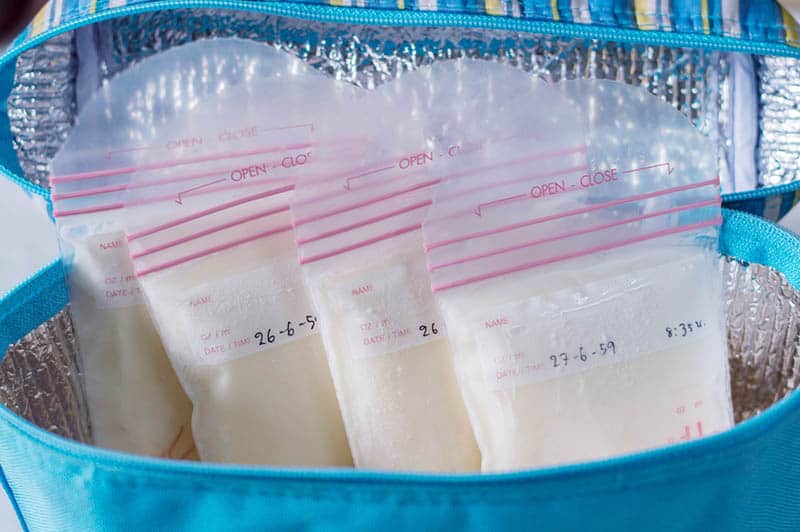
Before nipple creams, what did nursing mothers do to soothe their cracked or bleeding nipples? The answer lies in human milk which can also provide relief from the irritated skin and moisturize the area.
Just express a bit of breast milk and gently rub it into the skin. Wait for the area to air dry before covering it with clothing again.
5. Rinse the nipples with salt water
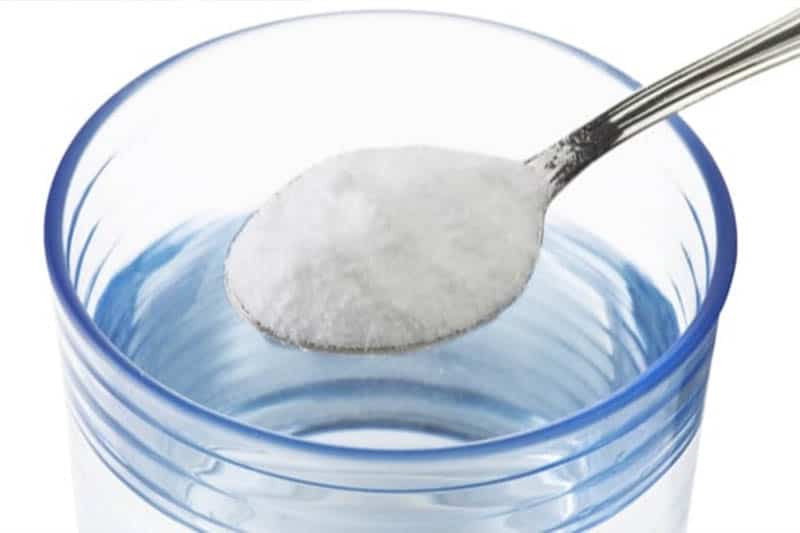
A salt water rinse is a good cracked nipple remedy because the combination of salt and water gets rid of any bacteria, prevents infection, and helps the skin heal.
To make the rinse, mix half a teaspoon of salt into a cup of water, preferably warm. Pour the salt water into a bowl and soak your nipples no longer than a minute. You can rinse the area with plain water and dry it with a towel.
When it comes to the salt water rinse, there can be too much of a good thing, so don’t soak your nipples for longer than a minute.
6. Use cold gel pads
- Soothing relief: Lansinoh Soothies Gel Pads provide instant cooling relief from cracked, painful or sore nipples so moms can continue to breastfeed. The pads can be stored in the fridge to enhance cooling.
- Helps heal sore nipples: Lansinoh Soothies help soothe and heal sore nipples, and can be reused for up to 72 hours. They come with a fabric backing to help protect your nipples from bra friction.
- Safe for mom & vegan: The gel pads are safe, absorbent and are made from glycerin. Lansinoh Soothies Gel Pads are vegan.
Prices pulled from the Amazon Product Advertising API on:
Product prices and availability are accurate as of the date/time indicated and are subject to change. Any price and availability information displayed on [relevant Amazon Site(s), as applicable] at the time of purchase will apply to the purchase of this product.
It’s one thing to treat your breast pain at home, where you can get comfortable and go topless when it suits you, but what can you do when you’re out and about and need to have your bra on? The chafing caused by your bra rubbing against your cracked nipple can make leaving the house very difficult.
Thankfully, there are breast pads that you can place inside your bra and they will provide you with a cooling sensation while you’re running around and getting things done. Plus, they help speed up the healing process.
7. Use breast shells
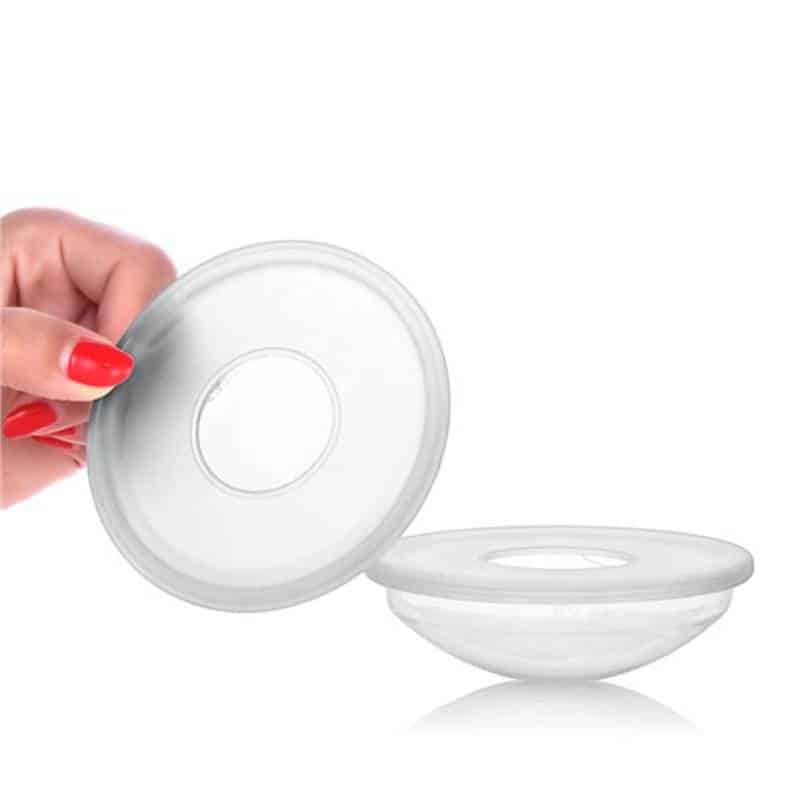
In addition to this, they collect breast milk during the day so not a single drop goes to waste as is the case when you wear disposable nursing pads. Opt for breast shells made from silicone as they will be soft against your skin and won’t dig into your breasts.
Since they are reusable, you will save a lot of money that would normally go to purchasing disposable pads.
If you still decide to use nursing pads, remember to replace them with dry ones as soon as they get wet as this can make it harder for your skin to heal.
8. Try different breastfeeding positions

In the first weeks of your baby’s life, you are still learning about the different nursing positions. Maybe you have already found one that you prefer, but when you’re experiencing sore, bleeding or cracked nipples, changing positions can help you find one that is less painful.
According to the La Leche League, you can try the cradle, laid-back, or football position to improve your breastfeeding experience and reduce soreness.
At the start of every nursing session, first offer the breast that is less sore or cracked because babies aren’t very gentle at the beginning and this will spare you some discomfort.
Apply ice or a cold compress prior to nursing to reduce the pain of the latch-on.
9. Try an over-the-counter pain reliever

Over-the-counter medication such as acetaminophen or ibuprofen are generally considered safe for breastfeeding moms but you should always talk to your doctor to get the all-clear before starting any kind of medication while nursing.
They might even suggest alternatives for you to try that require a prescription.
OTC pain relievers can make the pain more manageable while you treat the affected area with creams or other treatments and help you continue to breastfeed.
10. Apply a warm compress
Even though a warm compress can’t speed up healing like a nipple cream can, it’s an easy way to find some relief when you have no other options available.
Simply get a washcloth, soak it in hot or warm water, and place it on your breast after squeezing out any excess water.
11. Find the underlying cause of your cracked nipples
Although sore or cracked nipples, as a result of breastfeeding, are normal in the first few weeks after giving birth, this problem should resolve itself, even if you don’t go to great lengths to treat the affected skin.
However, this won’t happen if there is an underlying problem that’s not being addressed. If the pain and discomfort persist, call a lactation consultant to get to the bottom of the situation. They will be able to see, in person, how your baby is nursing and will be able to make a correct diagnosis.
Make no mistake, untreated sores can lead to much bigger conditions, such as mastitis, which is an infection accompanied by fever, painful breastfeeding, and swelling.
12. Nurse on demand

When very hungry, your baby might clamp down on your nipple with more vigor than usual, causing more pain. That’s why nursing on demand and keeping an eye out for your munchkin’s feeding cues is important. Get your little one to the breast before she gets too hungry.
Remember that when babies start crying, they’re already very hungry, so read up on all the signs of hunger before the crying begins.
13. Keep it comfortable
As your nipples recover, remember that it’s important to wear comfortable clothing that doesn’t restrict the airflow and isn’t too tight around your breasts. Opt for a soft nursing bra that’s made from cotton.
When you’re showering, avoid cleaning your nipples with soap or shower gel – plain water will be enough. Shower gels and soap can cause dryness, and often contain perfume which can further irritate the skin.
Also, when you’re getting ready for the day, make sure that any deodorant spray or perfume doesn’t come into contact with the healing skin.
14. Get a nipple shield
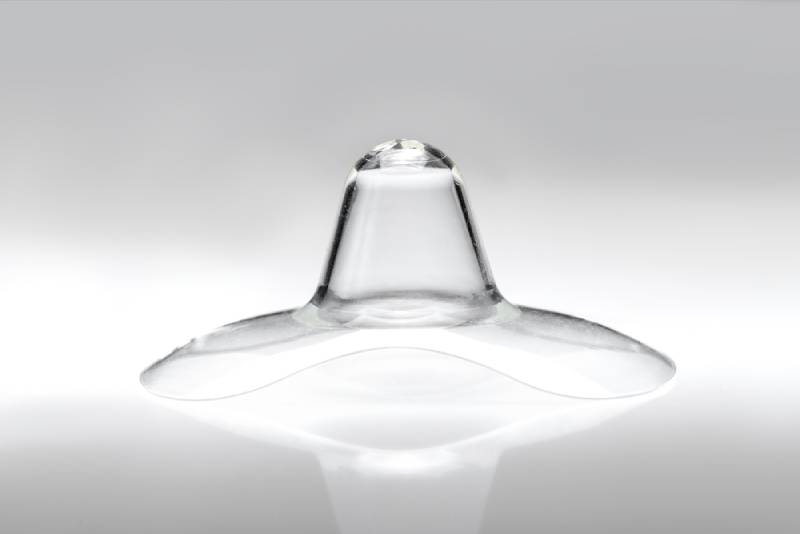
Typically prescribed to moms with inverted nipples, nipple shields act as a barrier between the baby’s mouth and your nipple and areola, allowing the skin to heal and your baby to breastfeed at the same time.
They come in different sizes, so make sure to get just the right size for you so that the milk can flow easily.
Even though nipple shields might seem like the perfect solution, they usually are the last option to consider. Before purchasing a pair, talk to a lactation consultant who can teach you how to use them properly.
Treatments to avoid
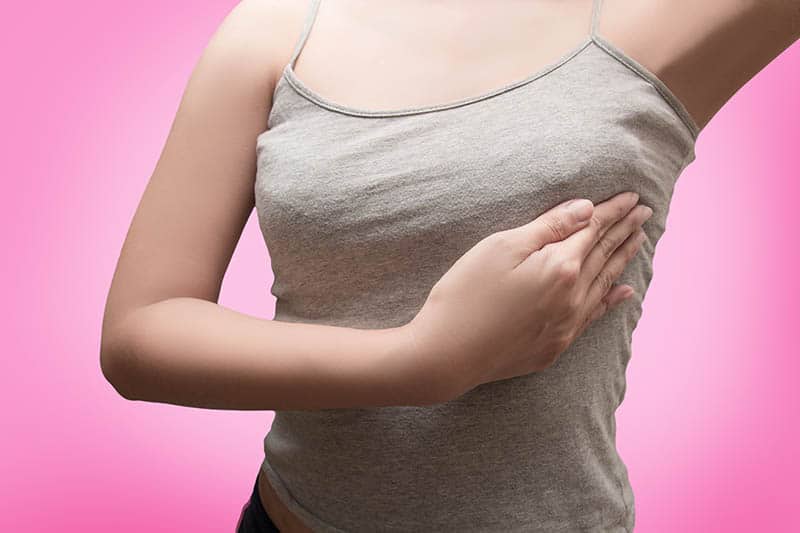
Despite your best efforts, sometimes the wrong treatment can undo any progress you have made. Over the years, many different remedies have become popular, some more effective than others. Here are some treatments for a cracked nipple from breastfeeding that you should avoid:
1. Using a hairdryer to dry out your nipples
Yes, this is a thing. In the past, mothers who suffered from cracked or sore nipples were told to use a hairdryer to speed up the healing process and relieve pain.
Although it is recommended for you to expose your nipples to the air as much as possible, the heat from a hairdryer can actually slow down the healing and lead to even more damage.
2. Apply a numbing cream
Numbing creams are great when it comes to reducing pain during procedures such as laser hair removal, for example. However, no matter how tempting it may seem, you shouldn’t apply a numbing cream to the nipple or the areola.
The cream could come in contact with your baby’s mouth and numb it, too. In addition, it could have a negative effect on your letdown reflex.
3. Petroleum jelly
Vaseline and other petroleum jelly products prevent the circulation of air which is key to your skin’s healing. Instead, opt for creams that are moisturizing and soothing but still allow your skin to breathe.
Also, if you come across a product that states it should not be ingested, know that you will have to wash it off your breasts before each nursing session. This defeats the entire purpose of helping your skin heal, so it’s best to avoid them altogether and find a product that is safe when ingested.
4. Wet tea bags
Applying a wet tea bag to your nipple is a very common piece of advice when it comes to dealing with this breastfeeding problem. While this does work for some women, it’s difficult to know the exact ingredients that went into the tea bag and whether one of them could further irritate your skin.
The best alternative is a simple warm compress which will have a similar soothing effect.
5. Creams that contain alcohol
Although I’m sure you would never knowingly put alcohol or a product that contains alcohol on the affected skin, there are many skincare products that do include it. Be careful not to apply anything that contains alcohol because it dries out the skin and makes it harder for it to heal.
6. Making breastfeeding sessions shorter
If you want to continue breastfeeding, then putting a time limit on your nursing sessions is the last thing you want to do. When you have cracked and sore nipples, it’s understandable that you might not enjoy these sessions as much. However, shortening them can lead to a drop in milk supply because your milk production is based on a strict supply and demand system.
Once the demand drops, so does the supply.
Common causes of cracked or sore nipples
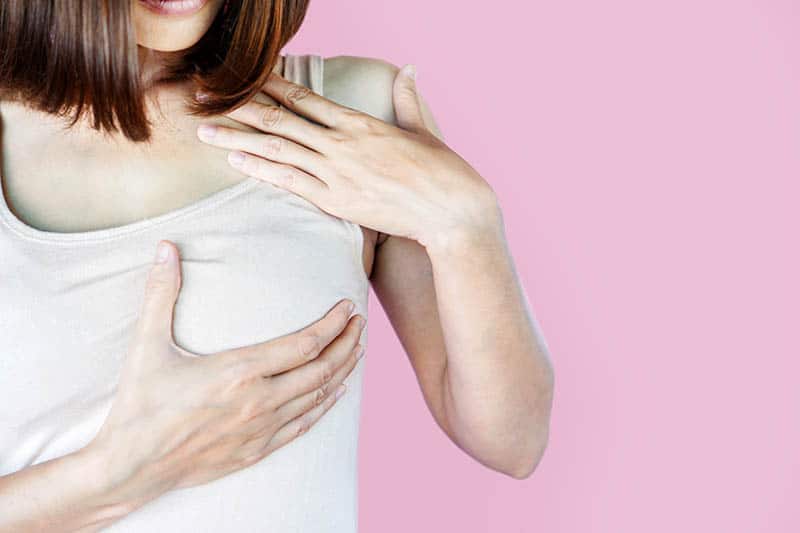
Here are some of the most common culprits behind cracked or sore nipples:
1. Nipple confusion
New mothers might want to combine bottle feedings with nursing sessions as this is more convenient. However, the technique used while sucking at the breast is different from a bottle nipple and the latter can lead to soreness or cracking.
For example, when drinking from a bottle, the baby usually clamps down on the nipple. With a silicone nipple, this is not an issue, but when your little one bites down on the real thing, then nursing becomes very painful.
When introducing a bottle to a breastfed baby, it’s important to practice pace feeding and choose a slow flow nipple to prevent damage to your nipples. Additionally, you might want to hold off on introducing the bottle for the first few weeks until both you and the baby get the hang of breastfeeding – this will further prevent nipple confusion.
2. Poor latching
A baby’s latch might need some gentle coaching and improvement for the skin on your breasts to heal. Poor latching is one of the most common causes of skin damage to the nipple and areola, as well as other breastfeeding problems, so make sure that your baby is properly latched.
If a poor latch is something you and your baby really struggle with, consult with a board-certified lactation consultant (IBCLC) or a healthcare provider.
3. Breast engorgement
Breast engorgement and a poor latch often go hand in hand. A few days after a mom gives birth, her milk comes in, causing the breasts to get really heavy and large. This stretches the nipple flat, making it harder for the baby to latch on. Thankfully, engorgement goes away with frequent nursing and warm washcloths and usually doesn’t last very long.
4. Tongue-tie
Sometimes, the cause of damage to your nipples is a condition known as tongue-tie. This is where the baby has a small piece of tissue that connects the bottom of the mouth to her tongue.
As this tissue keeps the tongue in place, not allowing the baby to move it into the correct position, your nursing sessions can become very painful. Not all babies have experienced difficulty while feeding but for those that do, there is a simple procedure that separates the tissue that connects the tongue and the mouth.
Don’t worry, it’s very quick and nearly painless, so your baby won’t be in too much distress.
5. Using breast shields in the wrong size
If you’re using a breast pump, the main cause could lie in the size of your breast shields. They’re also known as flanges, and they look like small funnels that are attached to your nipple.
When you turn on your breast pump, the shields create a tight seal, allowing the pump to drain the milk from your breasts. If the shields aren’t the right size, especially if they are too small, this could irritate your nipple and the areola.
In addition, make sure that you’re using the suction setting that works best for you and isn’t too strong.
6. Thrush
A yeast infection, thrush, is a very common cause of pain and cracking of the nipples. If you suspect you have thrush, then you need to visit your doctor to get medication prescribed to you because none of the above remedies will work.
How do you know if you have thrush? One of the biggest symptoms is the sudden return of breastfeeding pain or constant pain in the first few weeks after giving birth. The pain is very sharp and feels as though it’s shooting through your breasts.
Your nipples might appear cracked, have small blisters, and be very red. Because this infection can be transferred to the baby, you might notice small white spots inside the baby’s mouth. This is why treatment includes both the baby and the mother.
7. Teething
Even after months of pain-free, comfortable breastfeeding, the arrival of your baby’s teeth means that she might start using your nipples as a chewing toy. This is normal because there is a lot of pressure from the incoming baby teeth that babies soothe by gnawing on all sorts of things.
You can prevent nipple biting by providing a cold teething toy or cloth to chew on before you feed your little one. If she bites during the feeding, unlatch her, and provide the cold toy to chew on again. It’s important to teach her not to bite during feedings as soon as possible to prevent damage to your breasts.
Final thoughts
Did you know that breastfeeding pain is one of the main reasons why women stop breastfeeding? When you’re dealing with a cracked nipple, it can be hard to keep going, despite how much you want to exclusively breastfeed your little one.
Luckily, you can try all sorts of balms and creams that will soothe your sensitive skin and make it heal faster. If you notice oozing or that there have been no improvements despite your best efforts, then speak to a doctor ASAP to avoid complications such as mastitis.
I hope that my tips will help you weather this storm. Trust me, sooner or later, your breast pain will be a thing of the past and you will get to enjoy them fully.
References:
“Positioning” published by the La Leche League International on the La Leche League International website. Accessed August 28, 2020.
READ NEXT: SYMPTOMS, CAUSES AND TREATMENTS OF NIPPLE FISSURES
Like this post? Please share or pin it for later. You can also stay in the loop and follow us on Facebook, Instagram and Pinterest.
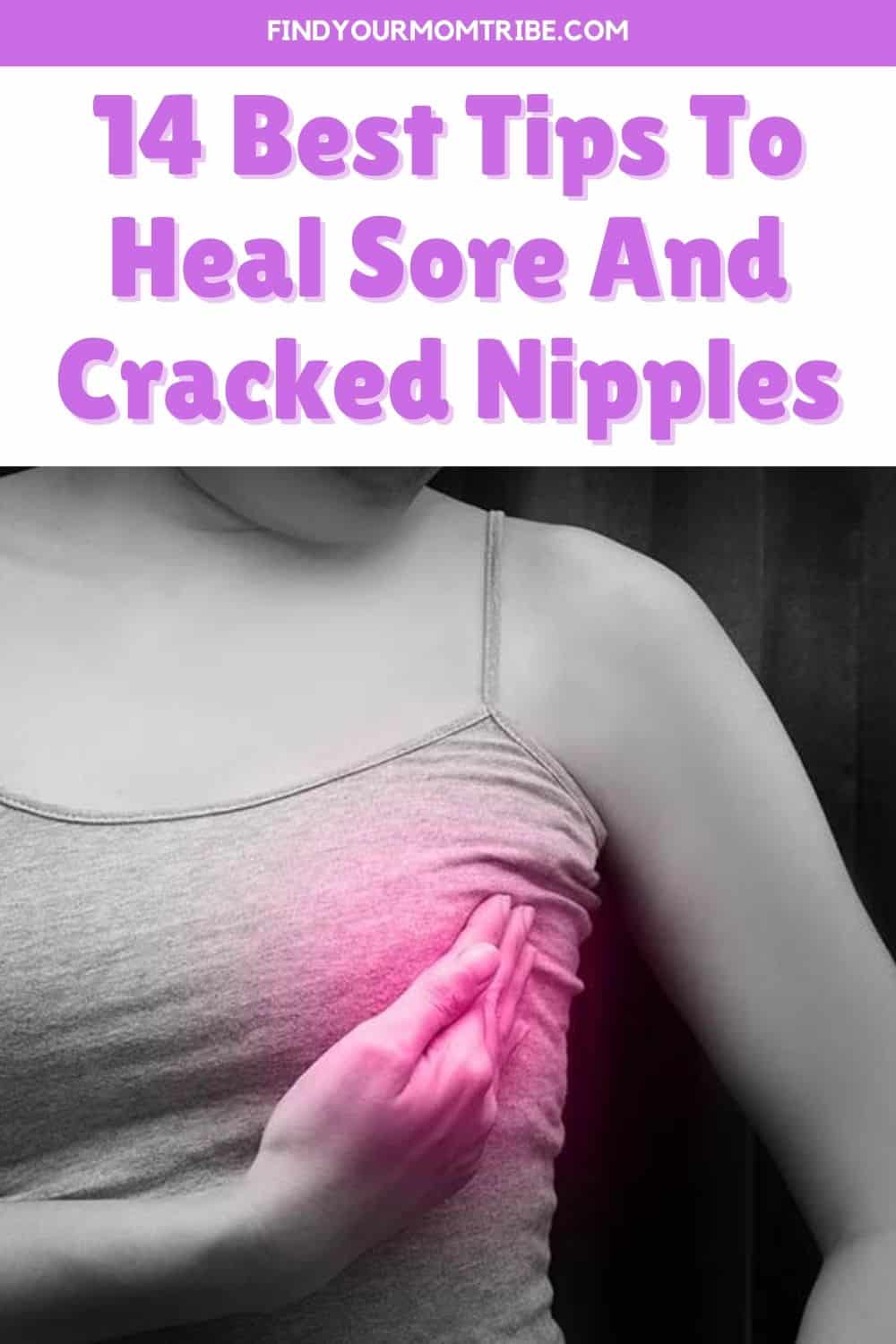
We love honesty! Find Your Mom Tribe is an Amazon Associate and we earn from qualifying purchases through affiliate links at no extra cost to you. Please see our full Amazon Affiliate disclosure for more information.

